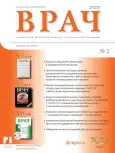Use of medical imaging techniques as part of the evidence for the presence of meningeal lymphatics
- Authors: Ryazanov V.V.1, Yukhno E.A.2, Kutsenko V.P.1, Sadykova G.K.1, Libert A.A.1, Menshikova S.V.1, Seliverstov P.V.2
-
Affiliations:
- Saint Petersburg State Pediatric Medical University of the Ministry of Health of Russia
- S.M. Kirov Military Medical Academy
- Issue: Vol 34, No 2 (2023)
- Pages: 25-28
- Section: Novelty in Medicine
- URL: https://journals.eco-vector.com/0236-3054/article/view/397475
- DOI: https://doi.org/10.29296/25877305-2023-02-05
- ID: 397475
Cite item
Abstract
The lymphatic system is an integral part of the microcirculatory bed, which structurally and functionally complements the venous bed. It ensures constancy in the internal environment of the human body and performs transport, barrier, lymphopoietic, and immune functions, playing an exceptional role in the metabolism and cleansing of the body’s cells and tissues from metabolic products.
The researchers assume that the meningeal lymphatic vessels (MLVs) may be involved in the process of cleansing the brain from metabolic products. Today, the problem of proving the existence of MLVs is a key one in understanding the anatomy and physiology of processes in the brain as a whole. Medical imaging techniques make it possible to prove the presence of MLVs. The paper analyzes the methods that are currently more frequently used to determine MLVs.
Experimental medical imaging techniques allow us to conduct researches, by confirming or ruling out the scientific theories put forward. These methods are further evidence-based medicine.
Full Text
About the authors
V. V. Ryazanov
Saint Petersburg State Pediatric Medical University of the Ministry of Health of Russia
Author for correspondence.
Email: val9126@mail.ru
Doctor of Medical Sciences, Associate Professor
Russian Federation, Saint PetersburgE. A. Yukhno
S.M. Kirov Military Medical Academy
Email: val9126@mail.ru
Candidate of Medical Sciences
Russian Federation, Saint PetersburgV. P. Kutsenko
Saint Petersburg State Pediatric Medical University of the Ministry of Health of Russia
Email: val9126@mail.ru
Candidate of Medical Sciences
Russian Federation, Saint PetersburgG. K. Sadykova
Saint Petersburg State Pediatric Medical University of the Ministry of Health of Russia
Email: val9126@mail.ru
Candidate of Medical Sciences
Russian Federation, Saint PetersburgA. A. Libert
Saint Petersburg State Pediatric Medical University of the Ministry of Health of Russia
Email: val9126@mail.ru
Russian Federation, Saint Petersburg
S. V. Menshikova
Saint Petersburg State Pediatric Medical University of the Ministry of Health of Russia
Email: val9126@mail.ru
Russian Federation, Saint Petersburg
P. V. Seliverstov
S.M. Kirov Military Medical Academy
Email: val9126@mail.ru
Candidate of Medical Sciences, Associate Professor
Russian Federation, Saint PetersburgReferences
- Albayram M.S., Smith G., Tufan F. et al. Non-invasive MR imaging of human brain lymphatic networks with connections to cervical lymph nodes. Nat Commun. 2022; 13 (1): 203. doi: 10.1038/s41467-021-27887-0
- Buccellato F.R., D’Anca M., Serpente M. et al. The Role of Glymphatic System in Alzheimer’s and Parkinson’s Disease Pathogenesis. Biomedicines. 2022; 10 (9): 2261. doi: 10.3390/biomedicines10092261
- Dai W., Yang M., Xia P. et al. A functional role of meningeal lymphatics in sex difference of stress susceptibility in mice. Nat Commun. 2022; 13 (1): 4825. doi: 10.1038/s41467-022-32556-x
- Jacob L., de Brito Neto J., Lenck S. et al. 3D-imaging reveals conserved cerebrospinal fluid drainage via meningeal lymphatic vasculature in mice and humans. BioRxiv. 2022; 2022.01.13.476230. doi: 10.1101/2022.01.13.476230
- Li X., Qi L., Yang D. et al. Meningeal lymphatic vessels mediate neurotropic viral drainage from the central nervous system. Nat Neurosci. 2022; 25 (5): 577–87. doi: 10.1038/s41593-022-01063-z
- Noé F.M., Marchi N. Central nervous system lymphatic unit, immunity, and epilepsy: Is there a link? Epilepsia Open. 2019; 4 (1): 30–9. doi: 10.1002/epi4.12302
- Olate-Briones A., Escalona E., Salazar. C. et al. The meningeal lymphatic vasculature in neuroinflammation. FASEB J. 2022; 36 (5): e22276. doi: 10.1096/fj.202101574RR
- Scholkmann F., Restin T. Meningeal lymphatic vessels in the human head: Examples of in vivo visualization with high-resolution 3T MRI. Matters: online. 2020. doi: 10.5167/uzh-195289
- Shimada R., Tatara Y., Kibayashi K. (2022) Gene expression in meningeal lymphatic endothelial cells following traumatic brain injury in mice. PLoS One. 2022; 17 (9): e0273892. doi: 10.1371/journal.pone.0273892
- Zhou C., Ma L., Xu H. et al. Meningeal lymphatics regulate radiotherapy efficacy through modulating anti-tumor immunity. Cell Res. 2022; 32 (6): 543–54. doi: 10.1038/s41422-022-00639-5
Supplementary files











